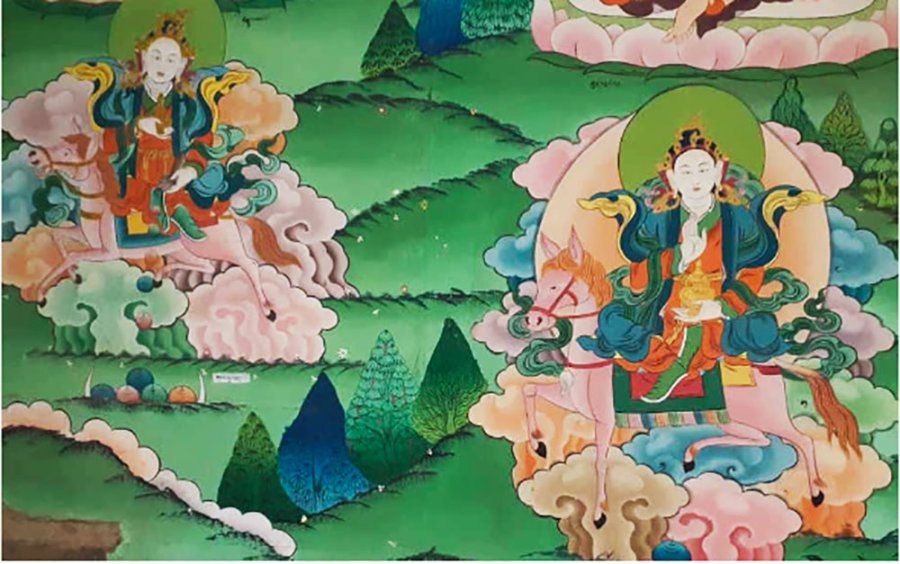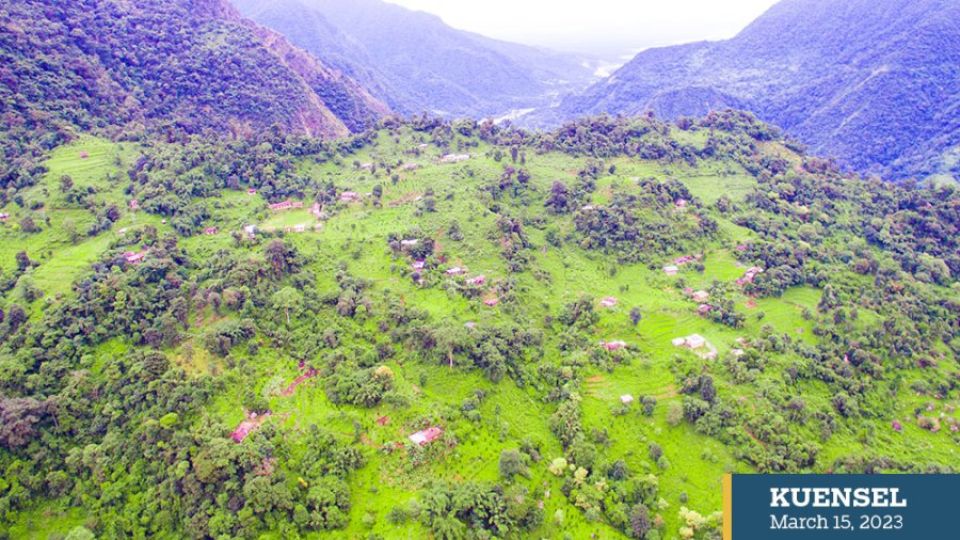March 17, 2023
THIMPU – A pleasant November evening. I was sitting around a campfire with the manager of the Jigmechhu ecotourism campsite.
Wangchuk Dorji first introduced me to Bayeul Kinzang. He is a proud native of the valley, once a rich hamlet in the country. I was already excited; it didn’t take long for me to plan a trip.
Early the next morning, Gongto came with his pickup truck; the road is not fit for light vehicles. Gongto is from Gidaphu, more than three hours’ walk away from Baeyul Kinzang, the only chiwog in Bongo without a motorable road connection. After a few minutes on the road, Ap Choki joined us; the local guide had come to Jigmechhu town to shop for lochoe.
“Vehicles are hard to come by on this farm road. Residents pay Nu 2,000 for a journey,” said Gongto, as he showed boulders precariously hanging by the roadside. “We survive by luck on such a road.”

Yangtham Yangchum
A landslide last monsoon washed away more than two kilometres of the road.
Baeyul Kinzang known commonly as Bai Kinza, is considered a hidden land that has a close connection to Terton Drukdra Dorji. As we gradually ascended the hill, Ap Choki pointed towards an oxbow lake (Changchey Yarlogma) near Wangchhu below.
The early 1700s were a tumultuous time for Bhutan. Warring factions fought for power and influence. The terton was a victim of one such vicious fight; the reigning desi, Druk Rabgay, commanded that the terton be killed. The terton was sealed in a basket and was thrown in a whirlpool in Wangchhu.
It is said that the river instead carried the saint backward and swept him onto a safe landing on the riverbank.
Fishermen from Bongo and Baeyul Kinzang who used to set traps in Wangchhu came upon the basket. A young man from Baeyul Kinzang got hold of the basket with the saint inside. The angry young man tried to harm the saint but the old man exchanged his catch with the young man and released the saint near a forest in Baeyul Kinzang. The terton left behind many pilgrimage sites in the valley.
Terton Drukdra Dorji is revered by Bongops as their primary saint. Names of places in Bongo have special association with the terton. Many believe that the hidden land houses the tip of Bodhgaya.
“That’s probably why the people here live very fulfilling lives. We do not face problems of scarcity in the village,” said Serchu, a caretaker of the village monastery.
This, the people here believe is due to the blessings of the guardian deity Yangtham Yangchum.
“We never run out of money and our wishes are granted spontaneously,” said Ap Choki. Last year, he funded a grand feast offering prayer at the Ami Ney, located at the mouth of Baeyul Kinzang. “Ama is kind and compassionate.”
Yangtham Yangchum, the mother-daughter guardian deities of Bongo, are charismatic goddesses of wealth.
A mandarin hub in the past, it is said that Baeyul Kinzang collected the first harvest of mandarin in the country until the production was cut short by citrus greening in 1999.
Farmers depend on cardamom. Most part of the land is now left fallow as many young people like Wangchuk Dorji seek opportunities in towns and cities.
As I reflect on these extraordinary stories, I can hear a faint beating drum from the house above the monastery.
“That’s a neljom. She’s the last of her kind in the village. She is my mother,” says Gongto. He is already on his way back to the campsite.


